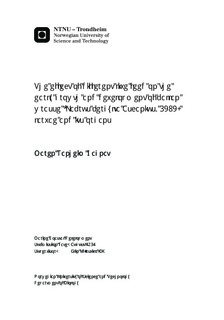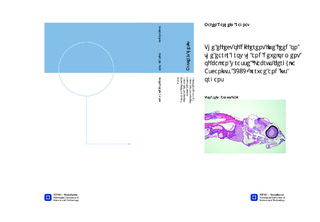| dc.description.abstract | Salmon lice (Lepeophtheirus salmonis) have been an increasing problem for the Norwegian aquaculture industry in recent years, and several chemicals have been used by the industry to get rid of the louse. However, resistance and reduced sensitivity towards a large quantity of these has resulted in a blooming interest for the use of wrasse as a biological method of sea louse control. The ballan wrasse (Labrus bergylta) is considered the most promising species for aquaculture, but problems with poor survival, growth and skeletal deformities suggest that a suboptimal first feeding practice may be used. At present, commercial farmers first feed the ballan wrasse larvae on enriched rotifers from 4 to approximately 30 dph, followed by Artemia sp. until weaning on formulated feed is successful. Copepods are considered the natural prey of most marine fish larvae, and usually a greater larval growth, survival and development are observed when they are used as first feed instead of rotifers. This has been attributed to the copepods high fraction of essential fatty acids in their polar lipid fraction, in addition to their great amounts of protein and free amino acids. The present study was conducted to evaluate the effect of using intensively reared copepods (Acartia tonsa naupliii) as early live feed for the ballan wrasse larvae on the larval growth and survival, and early organ growth and development, compared to using rotifers (Brachionus ibericus). Four different feeding regimes were used, varying in the live feed provided during the first 30 days. Larvae from the “Copepod”-treatment were fed exclusively with A. tonsa during this period. Larvae from the “Cop7”-treatment were fed A. tonsa from 4 to 10 dph, with a transition to enriched rotifers. Fish larvae from the “RotMG”-treatment were fed enriched rotifers the whole period, while the “RotChl”-treatment had a diet consisting of unenriched rotifers. All treatments had a transition to Artemia from 24-30 dph, and were weaned to formulated feed from 40-50 dph. Results from the present study indicated that intensively reared A. tonsa was more suitable as early live feed for ballan wrasse larvae compared to enriched or unenriched rotifers. Increased growth rates were obtained while feeding the larvae with copepods, and it resulted in larvae with significantly higher dry weight at the end of the experimental period (61 dph). No difference in larval growth was observed when feeding with enriched or unenriched rotifers, however larvae fed unenriched rotifers had a significantly lower survival than larvae from all other treatments. Higher organ volume growth rates were observed when copepods were used as feed, and the organ volumes were found to relate to the larval standard length. At 21 dph, the Copepod larvae had a significantly higher proportion of musculature than larvae from the other treatments, and the intestine appeared to be more developed and mature. | nb_NO |

